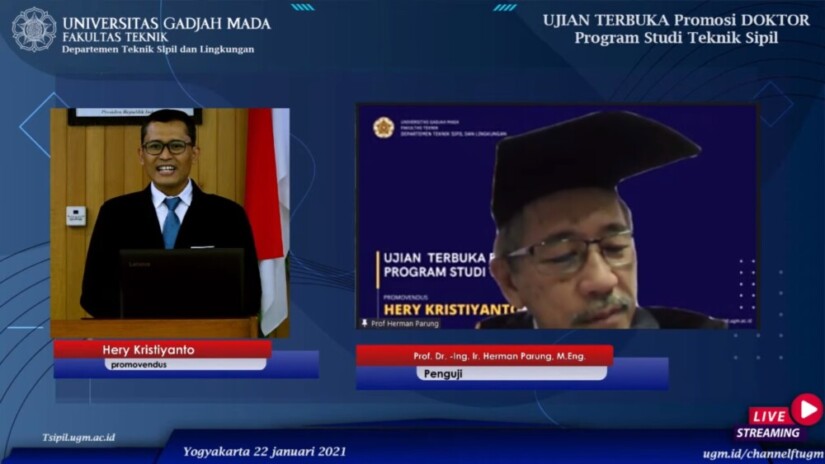
Hery Kristiyanto as a UGM student of the Civil Engineering Doctoral Study Program conducted research on the behavior of precast concrete beam joints and IWF steel corbel joints in plastic hinge areas.
This research goal is to obtain a joint system between two parts, which none other than the IWF steel corbel right in front of the column and precast concrete beam, which fulfill the requirements in the form of plastic hinges befalling in precast concrete blocks, as well as strength, energy dissipation, stiffness, ductility, and collapse mechanism.
“The joint is an essential part of the precast concrete building structure in granting strength and transferring forces between the joined components of the precast structure,” said Hery.
He revealed that the simple, easy, and fast processing creation could make joints’ position in the beam’s potential plastic hinge area around the column features.
In this research, he conducted the beam edge joint model between precast concrete and IWF steel corbel to define the joint model’s effect on strength, energy dissipation, stiffness, ductility, and the collapse mechanism of the beam.
There is a strong joint designed and unbroken in the joint model between the corbel and the precast beam edge steel plate. The failure happened in the precast concrete beam plastic hinge area.
“The joint model can transfer the forces acting between the two joined parts. The bending failure mechanism is fulfilled by starting with the bending failure until the yields of longitudinal reinforcement before the shear failure and the reinforcement bars,” he explained.
The measure of the ratio of strength and stiffness between the precast concrete beam and IWF steel beam aims to ensure that plastic hinges transpire in precast concrete beams.
He conducted the research through three test specimens with variations in the joint model. The first specimen utilizes a welded joint to connect the two ends of the beam, and the second specimen is the same as the first specimen, with the edge of the beam around 3 mm inserted by a steel plate.
On the other hand, the third specimen utilizes a bolted joint to link the beam’s two ends.
“Next, the researcher analyzed the effect of the joint model based on strength, energy dissipation, stiffness, ductility, and the beam collapse mechanism,” he explained.
The strength decline ratio symbolizes a maximum result of 20 percent, which meets the maximum requirement of 25 percent in ACI 374.1: 2005. The relative energy dissipation rate is 44.40 percent on average, which also meets the minimum requirements of 12.5 percent in SNI 7834: 2012.
The percentage of first cycle stiffness at Δ/L 3.5 percent ratio shows a minimum result of 21.9 percent, meeting the minimum requirements of 5 percent in SNI 7834: 2012. The joint model has a minimum ductility of 6.37, categorized as a structural system with absolute ductility.
“This Finite Element Method (FEM) can optimize the joint model, it is by gradually decreasing the joint capacity until we can get the optimal value,” he concluded.
Author: Gloria
Translator: Natasa A


